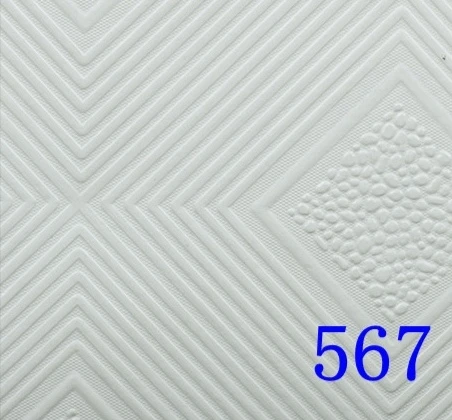Nov . 27, 2024 11:48 Back to list
Understanding the Concept and Benefits of Grid Ceilings in Modern Architecture
Understanding Grid Ceilings A Comprehensive Overview
In modern architectural design, the phrase grid ceiling has become increasingly relevant. It refers to a specific type of ceiling structure characterized by a modular grid layout. This design not only serves aesthetic purposes but also addresses practical aspects such as acoustics, lighting, and access to building infrastructure.
What is a Grid Ceiling?
A grid ceiling consists of a framework formed by a series of parallel and perpendicular members, creating a grid-like pattern. This modular framework typically uses metal or wooden materials, upon which panels or tiles can be laid. The panels can be made from various materials, including acoustic tiles, mineral fiber, metal, or drywall. Grid ceilings are particularly popular in commercial spaces, such as offices, schools, and retail stores, due to their versatility and ease of installation.
Advantages of Grid Ceilings
1. Aesthetic Flexibility Grid ceilings are renowned for their versatility in design. Various panel materials and finishes allow for customization to fit different aesthetic and functional needs. Whether a polished, modern look or a more traditional feel is desired, grid ceilings can accommodate various styles.
2. Acoustic Performance Acoustic grid ceilings can significantly improve sound quality within a space. The panels often possess sound-absorbing properties, minimizing echoes and noise pollution. This is particularly beneficial in environments like classrooms or conference rooms, where clear communication is vital.
3. Accessibility One of the primary practical benefits of grid ceilings is the ease with which they can be accessed. The modular structure allows for quick removal and replacement of panels, enabling easy access to plumbing, electrical wiring, and HVAC systems above the ceiling. This accessibility translates to savings in time and labor when conducting maintenance or repairs.
4. Cost-Effectiveness The installation of a grid ceiling can be more economical than traditional ceiling structures. Because they are relatively easy to install, they can reduce labor costs significantly. Additionally, the use of modular panels allows for repairs and updates without significant renovations.
5. Design and Integration Grid ceilings can seamlessly integrate with various building systems, including lighting and air conditioning. Modular lighting fixtures can be incorporated directly into the grid system, providing even illumination throughout the space. This integration allows for aesthetic uniformity and functional effectiveness.
what is a grid ceiling

Disadvantages of Grid Ceilings
Despite their numerous advantages, grid ceilings do come with some drawbacks. One notable concern is that they may not provide the same level of insulation as solid ceilings, which could affect energy efficiency in certain buildings. Additionally, because the ceiling is suspended, it might not be suitable for spaces with high ceilings or specialized acoustic treatments.
Applications of Grid Ceilings
Grid ceilings are found in various applications across sectors
- Commercial Spaces Retail stores and offices frequently use grid ceilings for their clean, organized look and practical functionality.
- Educational Institutions Schools and universities utilize grid ceilings to enhance acoustics, providing a conducive learning environment.
- Healthcare Facilities Hospitals and clinics benefit from grid ceilings due to their easy access for maintenance while also allowing the installation of specialized lighting and airflow.
- Public Buildings Museums, libraries, and government buildings often incorporate grid ceilings to support various aesthetic and functional requirements.
Conclusion
In summary, grid ceilings represent a versatile and practical solution for modern architectural needs. Their aesthetic flexibility, acoustic performance, and ease of maintenance make them a popular choice in a wide range of settings. While there are some limitations to consider, the benefits often outweigh the downsides, positioning grid ceilings as a top choice in contemporary design. As architects and builders continue to innovate, it is likely that grid ceilings will evolve and adapt, maintaining their relevance in the dynamic field of architecture.
-
Quality Ceiling Trap Doors & Access Panels | Easy & Secure AccessNewsAug.30,2025
-
Durable Ceiling T Grid Systems | Easy InstallationNewsAug.29,2025
-
PVC Gypsum Ceiling: Durable, Laminated Tiles for Modern SpacesNewsAug.28,2025
-
Pvc Gypsum Ceiling Is DurableNewsAug.21,2025
-
Mineral Fiber Board Is DurableNewsAug.21,2025
-
Ceiling Tile Clip Reusable DesignNewsAug.21,2025







